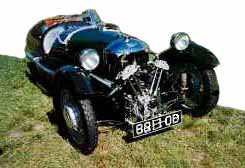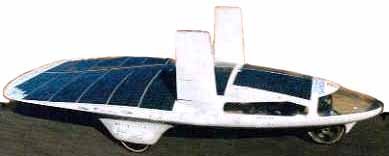Ordering 3-Wheelers:
Short 3-Wheeler history:
We’ve all seen 3-Wheeler images. The Morgan Trike had two front steering wheels and a rear driving wheel. It was popular in England during the thirties:
Other 3-Wheelers appeared after the second world war. From left to right: The Messerschmidt with its roof opening like in older airplanes, the BMW Isetta that had a front opening door and two side by side rear driving wheels, and the Vespa delivery tricycle:



Nowadays, lots of powerful road 3-Wheelers have appeared. Also, lots of low-power ones win fuel economy competitions:

In fact, lots of 3-Wheeler vehicles have been developed over the years and can be found on the internet.
Example of a site showing over 700 pages of images and information on most 3-Wheelers built up to now
Same 700 pages of images Website that is MORE RECENT.
In north America and although many have heard about the T-Rex, the BRP Can-Am SPYDER and the Polaris SLINGSHOT these last years, there aren’t so many 3-Wheelers on the road. So the first impression is to consider that 3-Wheelers cannot be as functional and competitive as conventional 2-Wheeler road motorcycles.
A first question: Can 3-Wheelers be stable?
3-Wheelers … only have three wheels. For many persons, they are thus non-stable and they present a risk of overturn in curves.
Curiously, it’s taught in Mechanical Engineering, that only three supporting points are needed to hold an object against a plane, and that four supporting points give an over-static system (that has too many supporting points).
On the other hand, many may recall having overturned when they were young and riding their tricycle, at ‘high’ speeds … Others may remember the off-road 3-Wheelers of the early 1980’s that had a single front wheel and overturned easily when breaking while turning. This caused their elimination of the North American market.
Stability of 3-Wheelers was thus often questioned, resulting in the NHTSA (National Highway Traffic Safety Administration of the USA) mandating a workgroup to clear out the issue. This gave the DOT HS-806-093 report:
Evaluation of Electric and Hybrid 3-Wheeled Vehicles for Handling and Stability, Volume II: Technical Report, Paul G. Van Valkenburgh, Richard H. Klein, Henry T. Szostak, September 1981, 115 pages.
An essential conclusion of these report can be found on page 112:
“Based on the research done to date we believe that it is possible to build a 3-wheeled car with essentially the same handling and overturn characteristics as any given 4-wheeled car.“
This conclusion is easily understandable if a 3-Wheeler with two front wheels, such as to the right, is considered.
If the center of gravity of the vehicle-occupants assembly is sufficiently low to be under the pyramid, the vehicle will not roll sideways in a curve and will not tip backward when accelerating or tip forward when braking.
Note that you can jump to the Simple Visual Analysis page for an introduction to 3-Wheeler stability, or to the Analysis of 3-Wheeler stability page for a more detailed mechanical analysis.
Furthermore if the location of the center of gravity is adequate, a 3-Wheeler may then have a safety margin against rollover as good as for any 4-wheeler. Thus, any 3-Wheeler ‘can’ be stable on the road provided it’s well designed.
Obviously, 3-Wheelers are not all well designed. Moreover, right from the start they are not created equal with their own specific component layout that does not always permit positioning the center of gravity correctly.
Component layout of 3-Wheelers:
In the case of 4-Wheel cars, the general layout of the engine, the steering and the driving wheels has a dramatic influence on the potential of these vehicles. For example:
– A car with front engine, front steering wheels and rear driving wheels has room up front for a larger engine and a fair weight up front for high speed stability on highways. Rear traction (or propulsion) insures strong starting accelerations permitted by the bigger engine, since accelerations transfer weight at the rear to insure the necessary ground traction. This front-engine/rear-drive layout thus lets cars like the Corvette or BMWs accelerate fast while offering good straight line stability on highways.
– A car with front engine, front driving and steering wheels offers a propulsion system (engine, gearbox, differential and drive-shafts) that is less roomy and powerful but compact and concentrated up front. This leaves more room for passengers and luggage at the rear. Also, lots of weight up front lets smaller vehicles still be stable at high speeds on highways. And the added weight up front is on the driving wheels to insure better traction on snow during winter. This layout that is different from the first, thus insures marketing room for smaller vehicles like the Honda Civic and Volkswagon Golf.
It’s the same with 3-Wheelers: Their component layout determines their intrinsic advantages and disadvantages, and they are far from being created equal. Thus, it can be very informative to order them in terms of their component layout.
Ordering 3-Wheelers in terms of their component layout:
Click on the following links to examine this classification:
Conventional motorcycle with a side-car
